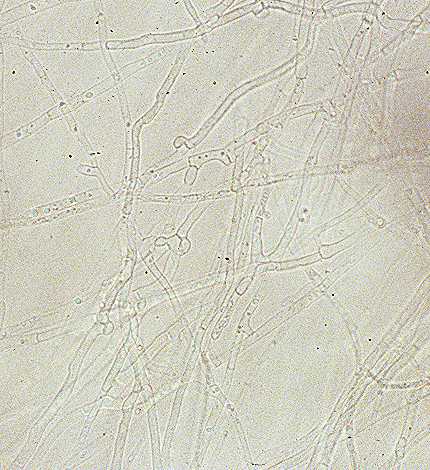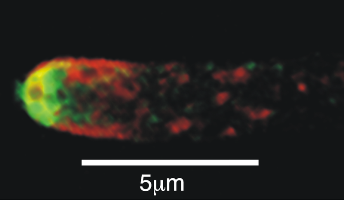Adaptation
Clamp
Connections- These clamp
connections are integral parts to the growth of hyphae. These
adaptations are what allow the fungal cells to remain in a
dikaryon stage until the point of spore production.
Secretion of toxins- Amanita bisporigera secretes an extremely potent toxin that is often found to be toxic to a number of different organisms. This prevents Amanita bisporigera from being a nutrient source for many organisms; increasing their chance of survival.
Mycorrhizal
relationship- A. bisporigera forms a
relationship with the roots of trees within the woodland habitat that
it lives. An example of some trees that Amanita bisporigera
could form this relationship with are
Sugar Maple and
Eastern White Pine. This allows for the
fungus to gain valuable nutrients from the plant. In return the plant gains valuable nutrients from
the fungus as well.
Presence of gills-
Gills are crucial in maximizing the amount of surface area for the
production of external basidiospores. For A. bisporigera the
gills are free from the stem, which creates more surface
area for the production and release of spores.
Digestion before Ingestion- A. bisporigera ,along with other fungi, secretes exoenzymes that breakdown the substrate. The tips of the hyphae contains a specialized structure known as a Spitzenkörper. This structure contains the vesicles responsible for the secretion of the exoenzymes. The nutrients that are needed are then absorbed into the fungal cells. This method of obtaining nutrients allows A. bisporigera to disregard digestive structures within the hyphae.
Hyphae-
A. bisporigera
uses hyphae, or fiber-like structures, to facilitate growth and
various other functions. Such as transport and storage
of
nutrients. Hyphae tend to grow towards the nutrient
source, and eventually a fruiting body will form, along with the
reproductive gills.
Sensing Light- A.
bisporigera has the ability to sense light within the
environment. This is important in reproduction because the fungus
needs a way to determine when to make spores. It would be
beneficial for spores to be produced above ground so the spores can
travel easily. Sensing light is one of the easiest ways for
fungi to do this. Understanding the mechanism as to how this works
remains relatively unclear.
spores can
travel easily. Sensing light is one of the easiest ways for
fungi to do this. Understanding the mechanism as to how this works
remains relatively unclear.
A photo to the right shows what a clamp connection might look like. The filament-like structures happen to be hyphae. Notice the protrusions or "bulges" that extend off of the hyphae. These are the clamp connections that allow for the cell to remain in a dikaryon stage even after it has divided. This is an extremely important adaptation that has allowed for Amanita Bisporigera to be dominated by the dikaryon stage of the life cycle.

The photo above is a picture of a hyphae. The Spitzenkörper is located near the tip of the hyphae that is yellowish-green in color.
Source: Wikipedia Commons
Continue to see how this organism acquires and uses nutrients.